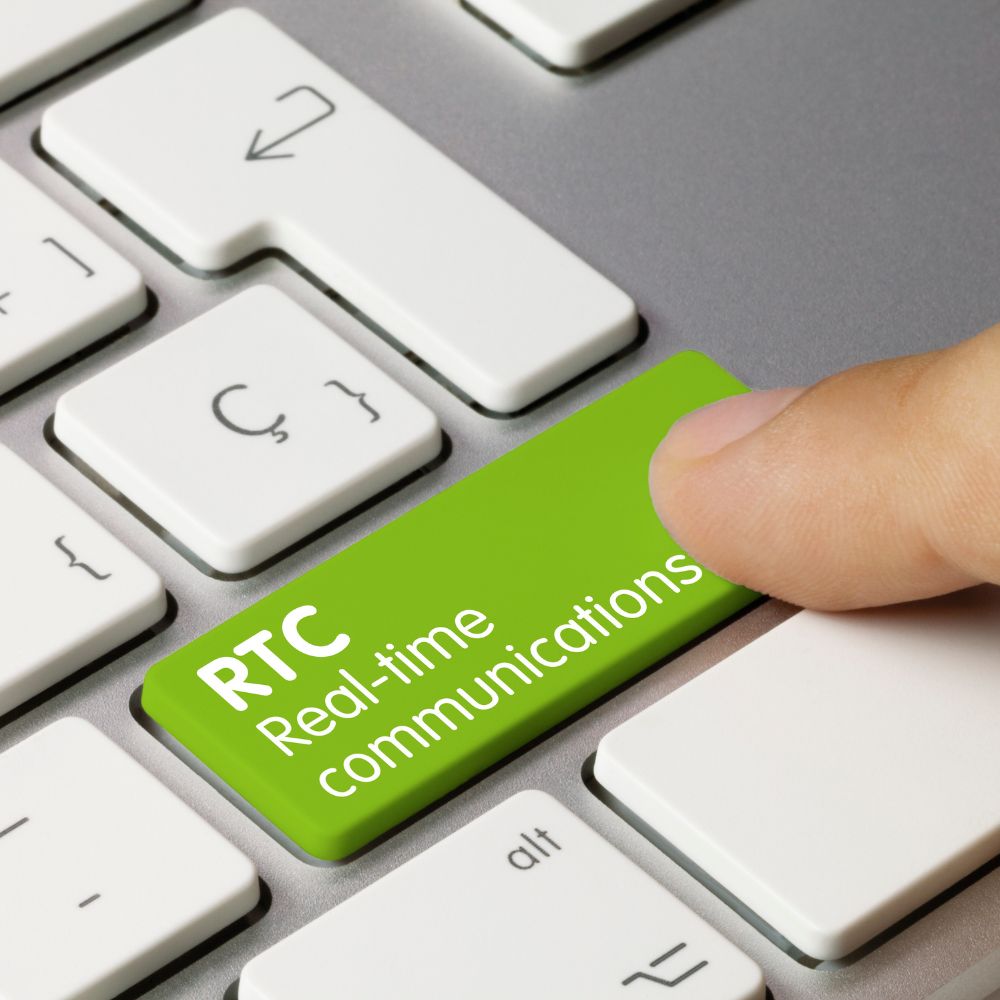What Is Real-Time Communication (RTC)?
2023-01-24 15:19:17

Most online interactions occur in real-time. Research has shown that RTC can make a big difference in productivity and efficiency. For example, some studies found that workers who were able to communicate more effectively, and in real-time were more productive.
We're all constantly connected to the internet, and real-time communications (RTC) are a big reason why. RTC allows us to communicate with others in real time, making online communication more personal and interactive.
In this blog post, we will discuss what RTC is, the different types of RTC technologies, and how they can benefit your business. We'll also explore some of the top RTC platforms currently available.
So whether you're new to RTC or want to learn more about it, read on!
What is Real-Time Communications (RTC)?
Real-time communications (RTC) refers to any online business communications that happen in real-time. This means that participants can interact with each other immediately, without any delays.
RTC can be used for both audio and video communication, and it's a key technology for many popular applications and platforms, such as Skype, Zoom, Google Hangouts, and more.
There are two main types of RTC technologies: VoIP (Voice over Internet Protocol) and WebRTC (Web Real-Time Communications).
VoIP systems are a type of RTC that allows users to make voice calls over the internet. Calls are made using an internet connection rather than a traditional phone line. This means that VoIP calls can be made from anywhere in the world, as long as there is an internet connection.
WebRTC is a newer type of RTC that allows for real-time audio and video communication directly in a web browser without downloading any additional software or plugins. WebRTC is built into most major browsers, such as Google Chrome, Mozilla Firefox, Safari, and Microsoft Edge.
RTC Data Transmission: Half & Full Duplex
RTC technologies use two different types of data transmission: half duplex and full duplex.
Half-duplex transmission is when data can only travel in one direction at a time. This is similar to a walkie-talkie, where only one person can speak at a time.
Full-duplex transmission is when data can travel in both directions simultaneously. This is like a phone call, where both parties can talk and listen simultaneously.
Most RTC applications use full-duplex transmission, as it provides the best user experience. However, some applications use half-duplex communication, such as push-to-talk (PTT) apps like Voxer.
How Can RTC Benefit Your Business?
There are many ways that RTC can benefit your business. Here are some of the top benefits:
Improved Customer Service: RTC can be used to provide better customer service. For example, you can use RTC to provide live customer support or sales assistance. This can help you resolve customer issues more quickly and efficiently.
Increased Productivity: RTC can also be used for internal communication, such as team meetings, training sessions, etc. This can help improve productivity by reducing travel time and expenses.
Improved Collaboration: RTC platforms often have features that facilitate collaboration, such as file sharing, screen sharing, and video conferencing. This can help teams work together more effectively, whether they're in the same office or working remotely.
Enhanced Security: RTC platforms typically offer enhanced security features, such as end-to-end encryption, that can help protect your data and communications.
How to Optimise Your Real-Time Communications for Business Process?
There are a few things you can do to optimise your RTC for business:
Choose the Right Platform: Not all RTC platforms are created equal. There are many different options available, so it's essential to choose the one that's best for your needs. Consider features, pricing, scalability, and security when making your decision.
Make Sure Your Network is Up to par: A robust and reliable internet connection is essential for RTC. Ensure your network is up to par before using RTC for business purposes.
Test, Test, Test: Before using RTC for business-critical applications, test it thoroughly. This will help ensure that everything works as it should and help you avoid any unexpected issues.
Don't forget about security: As with any online communication, security is a top concern. Be sure to choose a platform with robust security features, such as end-to-end encryption.
RTC can offer many benefits for businesses of all sizes. By choosing the right platform and optimizing your RTC setup, you can ensure you get the most out of your real-time communications.
What Should You Avoid At All Costs In RTC?
While there are many benefits to using RTC, there are also a few things you should avoid:
Don't use public Wi-Fi: Public Wi-Fi is not secure, so it's not ideal for RTC. If you need to use RTC on public Wi-Fi, be sure to use a VPN for added security.
Don't forget about privacy: RTC platforms that don't offer end-to-end encryption may not be as private as you think. Be sure to choose a platform that provides this feature to help protect your data and communications.
Don't use unsecured protocols: Some RTC platforms use unsecured protocols, such as SIP or H.323. These protocols are not as secure as others, so it's best to avoid them if possible.
By avoiding these common mistakes, you can help ensure your RTC experience is positive and productive.
RTC Done Right
RTC can be an excellent asset for businesses of all sizes. When choosing an RTC platform, it's essential to consider factors such as features, pricing, scalability, and security.
Making sure your network is up to par and testing the platform thoroughly before using it for business purposes is also essential.
By taking these steps, you can ensure you get the most out of your real-time communications. If you'd like to get started with perfect PABX and real-time communications, get in touch with us now.


